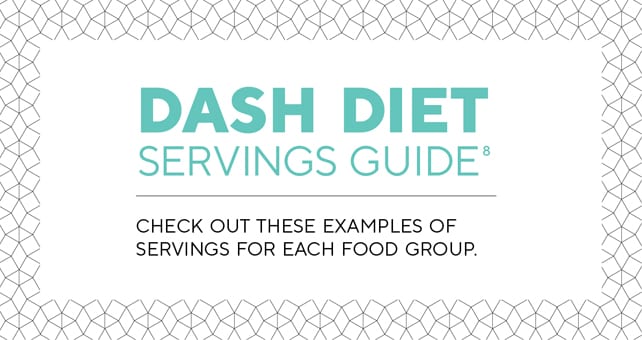Since May is National High Blood Pressure Education Month,1 we’re taking the opportunity to share the most current news about high blood pressure and ways to keep your blood pressure in check.
Nearly 1 in 2 adults in the US has high blood pressure, according to the American College for Cardiology (ACC) and the American Heart Association (AHA).2 High blood pressure, also known as hypertension, may increase your risk for heart disease and stroke, which are leading causes of death.3
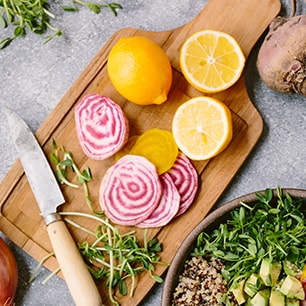
The good news is that high blood pressure is usually treatable.2 You may be able to manage your blood pressure by monitoring it regularly and implementing certain lifestyle changes. Start by speaking with your physician about treatment options that are right for you.
Blood Pressure Guidelines
What is blood pressure? It’s a measure of how hard your blood pushes against your arteries as it moves through your body.2
How is it measured? A blood pressure monitor measures with two numbers: systolic and diastolic. Systolic (the top number) is the pressure in the arteries when the heart pumps. Diastolic (the bottom number) is the pressure in the vessels when the heart relaxes between heartbeats. These numbers are measured in millimeters of mercury (mmHg).2
What are current blood pressure guidelines? In 2017, the ACC and the AHA introduced new guidelines that lowered the definition of high blood pressure, allowing for earlier intervention.4 Note that if just one of your numbers is above normal, you may have high blood pressure.2
| Category | Amount (measured in mmHg) |
|---|---|
| Normal | Less than 120/80 |
| Elevated | Systolic 120–129 and Diastolic less than 80 |
| Hypertension Stage 1 | Systolic 130–139 or Diastolic 80–89 |
| Hypertension Stage 2 | Systolic 140 or higher or Diastolic 90 or higher |
| Hypertensive Crisis | Systolic over 180 and/or Diastolic over 120* |
*Patients in hypertensive crisis need immediate medical care.
6 Steps to Lower Your Blood Pressure
Let’s walk through six steps you can take to lower high blood pressure and maintain healthy blood pressure.
Step 1: Lose weight safely.
If you are overweight, your blood pressure should decrease about 1 mmHg for every 2.2 pounds of weight you lose. Begin by reducing your calorie intake and increasing physical activity. A 10% weight loss in 6 months is safe and realistic, according to the National Institutes of Health.5 Learn tips for improving your diet and physical activity below.
Step 2: Eat a balanced diet with DASH.
A special eating plan called Dietary Approaches to Stop Hypertension (DASH) offers a balanced diet known to be effective for lowering blood pressure6 and LDL, or bad, cholesterol.7 The DASH diet is easy to implement with foods from Publix, and includes daily and weekly servings from different food groups based on your calorie needs.8
Here’s how to get started with the DASH diet:
- Calculate your calorie needs here.*
- Identify your daily and weekly number of servings† per food group.
- Follow the servings guide below.
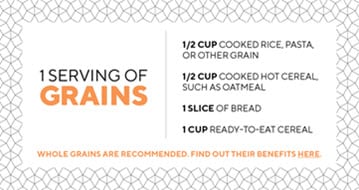
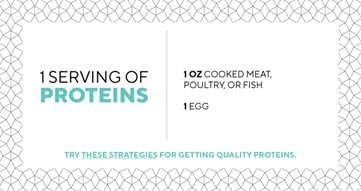
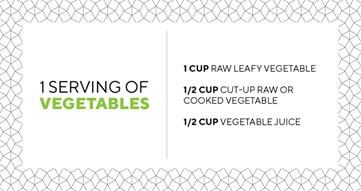


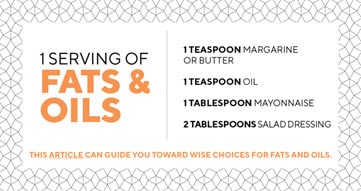
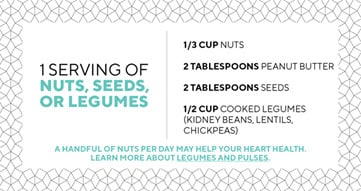
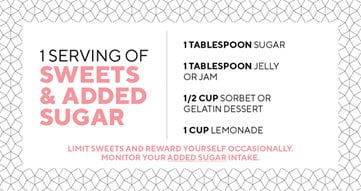
Step 3: Cut back on sodium.
The FDA recently changed the recommended daily allowance for sodium from 2400 mg to
2300 mg.9 Start with 2300 mg of sodium per day and gradually reduce it to 1500 mg per day.
Try these delicious recipes with less salt:
- Spiced Salmon with Mango Salsa and Cauliflower “Rice”
- Spiced Yogurt Chicken with Creamy Vegetable Salad
Check out more information about sodium and how to reduce your sodium intake without losing flavor.
Step 4: Increase potassium intake.
Since the DASH diet is high in fruits and vegetables, it’s a great way to get more potassium.8 Check out these details about the push for potassium.
Step 5: Increase physical activity.
Moving more and sitting less has tremendous benefits for everyone. Take small steps to increase your activity.
Step 6: Moderate alcohol consumption.
If you drink alcohol, use the following guidelines10 to keep it in check:
- Men may have 2 drinks or fewer per day.
- Women may have 1 drink or fewer per day.
A standard drink contains roughly 14 grams of pure alcohol, which is typically found in 12 oz regular beer, 5 oz wine, and 1.5 oz distilled spirits.
Monitor Your Blood Pressure
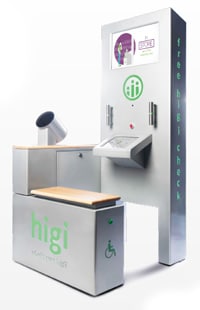 If your blood pressure is high, be sure to check it regularly. Here are two easy ways:
If your blood pressure is high, be sure to check it regularly. Here are two easy ways:
- At home or on the go with a portable blood pressure monitor, available at Publix in arm and wrist versions. For more information about these items located behind the Publix Pharmacy counter, please see your Publix pharmacist.
- At your Publix Pharmacy higi health station (image at right), which also checks your heart rate, weight, and body mass index (BMI). Create a free higi account, and monitor your progress via the higi app.‡ Also, you can sign up for monthly challenges to win prizes!
Be sure to consult your medical professional with questions about monitoring or lowering your blood pressure.
For the Love of You
Choosing how you eat is uniquely personal. It’s about your needs, your preferences, and your goals. As your wellness ally, Publix is in your corner with fresh ideas, recipes, and wellness icons that make it easier to shift toward wiser food choices. It’s all about you, at your very best.
*By clicking this link, you will leave publix.com and enter the Mayo Clinic site that they operate and control.
†By clicking this link, you will leave publix.com and enter the National Heart, Lung, and Blood Institute site that they operate and control.
‡By clicking this link, you will leave publix.com and enter the higi site that they operate and control.
Sources
1 National Heart, Lung & Blood Institute. “National High Blood Pressure Education Month.” National Institutes of Health (NIH), Department of Health & Human Services (HHS). Accessed February 5, 2019.
2 American College of Cardiology. “High Blood Pressure.” CardioSmart.org. June 2016.
3 Centers for Disease Control & Prevention (CDC). “About High Blood Pressure.” U.S. Department of Health & Human Services (HHS). July 18, 2018.
4 American College of Cardiology. “New ACC/AHA High Blood Pressure Guidelines Lower Definition of Hypertension.” ACC.org. November 13, 2017.
5 Pi-Sunyer, F. Xavier, MD, MPH, Diane M. Becker, ScD, MPH, Claude Bouchard, PhD, Richard A. Carleton, MD, Graham A. Colditz, MD, DrPH, and William H. Dietz, MD, PhD, et al. “Clinical Guidelines on the Identification, Evaluation, and Treatment of Overweight and Obesity in Adults: The Evidence Report.” National Institutes of Health (NIH), U.S. Department of Health & Human Services (HHS). September 1998.
6 Appel, Lawrence J., MD, MPH, Thomas J. Moore, MD, Eva Obarzanek, PhD, William M. Vollmer, PhD, Laura P. Svetkey, MD, MHS, Frank M. Sacks, MD, et al. “A Clinical Trial of the Effects of Dietary Patterns on Blood Pressure.” The New England Journal of Medicine CCCXXXVI, no. XVI (April 17, 1997): 1117–24.
7 Swain, Janis F., MS, RD, Phyllis B. McCarron, MS, RD, Eileen F. Hamilton, DTR, Frank M. Sacks, MD, and Lawrence J. Appel, MD. “Characteristics of the Diet Patterns Tested in the Optimal Macronutrient Intake Trial to Prevent Heart Disease (OmniHeart): Options for a Heart-Healthy Diet.” Journal of the Academy of Nutrition and Dietetics CVIII, no. II (February 2008): 257–65.
8 National Heart, Lung & Blood Institute. “DASH Eating Plan.” National Institutes of Health (NIH), U.S. Department of Health & Human Services (HHS). Accessed February 5, 2019.
9 U.S. Food & Drug Administration (FDA). “Use the Nutrition Facts Label to Reduce Your Intake of Sodium in Your Diet.” U.S. Department of Health & Human Services (HHS). June 12, 2018.
10 Centers for Disease Control & Prevention (CDC). “Preventing High Blood Pressure: Healthy Living Habits.” U.S. Department of Health & Human Services (HHS). July 7, 2014.

 You are about to leave publix.com and enter the Instacart site that they operate and control. Publix’s delivery and curbside pickup item prices are higher than item prices in physical store locations. Prices are based on data collected in store and are subject to delays and errors. Fees, tips & taxes may apply. Subject to terms & availability. Publix Liquors orders cannot be combined with grocery delivery. Drink Responsibly. Be 21. For prescription delivery, log in to your pharmacy account by using the Publix Pharmacy app or visiting
You are about to leave publix.com and enter the Instacart site that they operate and control. Publix’s delivery and curbside pickup item prices are higher than item prices in physical store locations. Prices are based on data collected in store and are subject to delays and errors. Fees, tips & taxes may apply. Subject to terms & availability. Publix Liquors orders cannot be combined with grocery delivery. Drink Responsibly. Be 21. For prescription delivery, log in to your pharmacy account by using the Publix Pharmacy app or visiting 